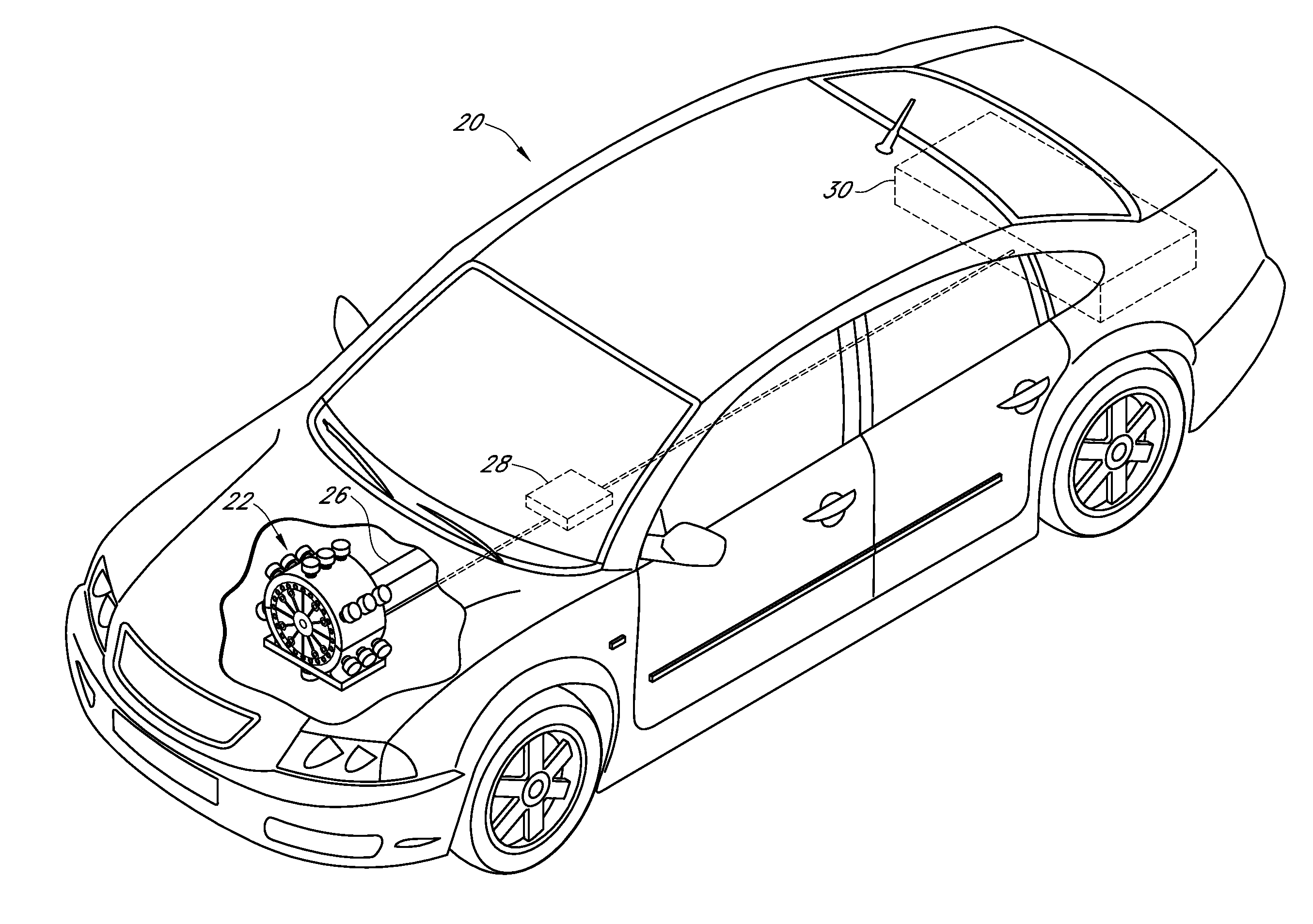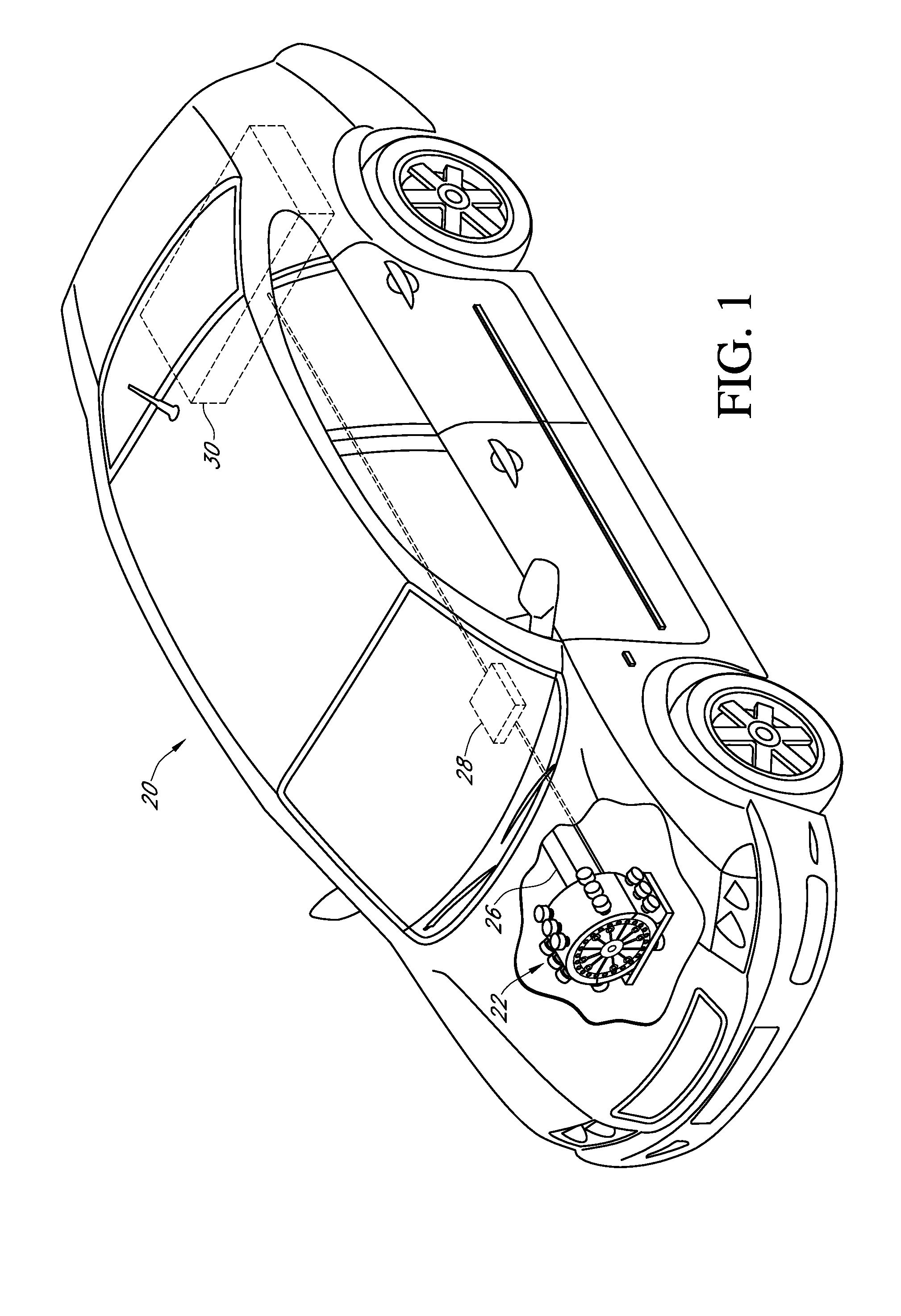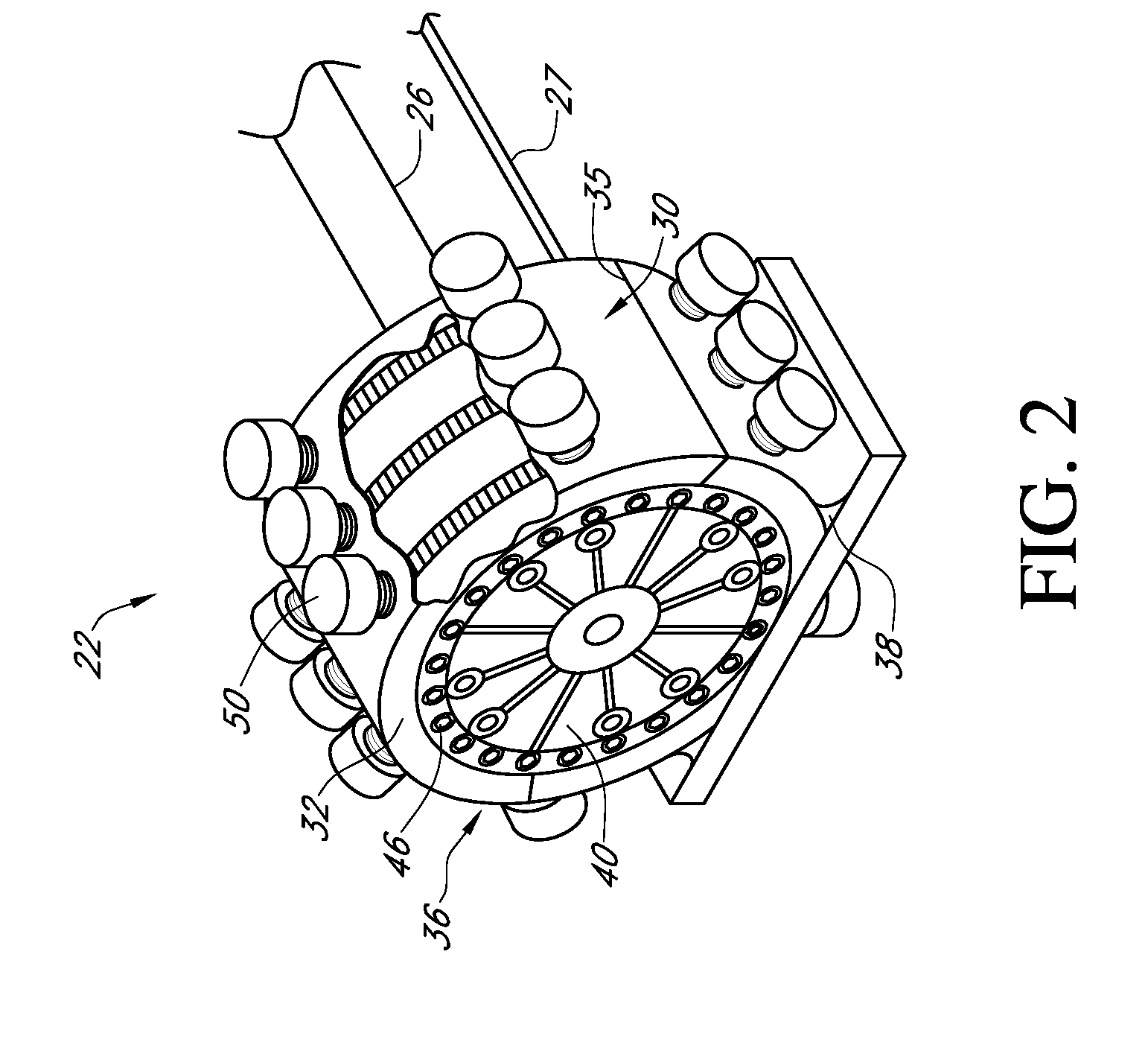Systems and Methods for Powering a Variable Load with a MultiStage Flywheel Motor
a multi-stage flywheel motor and variable load technology, which is applied in mechanical energy handling, mechanical equipment, transportation and packaging, etc., can solve the problems of not being able to provide the peak power necessary to adequately propel a vehicle, single-stage flywheel motors are often unable to provide sustained power output when needed, and require a large amount of power for a variable duration. , to achieve the effect of increasing the moment of inertia
- Summary
- Abstract
- Description
- Claims
- Application Information
AI Technical Summary
Benefits of technology
Problems solved by technology
Method used
Image
Examples
Embodiment Construction
[0044]In accordance with an exemplary embodiment of the present invention, FIG. 1 depicts a multi-stage flywheel motor assembly 22 (also referred to herein as a “flywheel motor assembly” or a “flywheel motor”) mounted in the front engine compartment of an automotive vehicle 20. The flywheel motor assembly 22 may be mounted within the confines of a vehicle 20 in any manner well known in the Art (e.g., such as with vibration-isolating mounts), without departing from the spirit and scope of the present invention.
[0045]A power source 30 may be connected to the flywheel motor assembly 22 via a controller 28. The power source 30 is preferably a battery array, but may also be a super capacitor, fuel cell, generator, or the like. Alternatively, the power source 30 may provide non-electrical power such as a hydraulic or pneumatic power to drive the flywheel motor 22. In accordance with various embodiments, the controller 28 may manage, convert, distribute and / or condition energy emanating fr...
PUM
 Login to View More
Login to View More Abstract
Description
Claims
Application Information
 Login to View More
Login to View More - R&D
- Intellectual Property
- Life Sciences
- Materials
- Tech Scout
- Unparalleled Data Quality
- Higher Quality Content
- 60% Fewer Hallucinations
Browse by: Latest US Patents, China's latest patents, Technical Efficacy Thesaurus, Application Domain, Technology Topic, Popular Technical Reports.
© 2025 PatSnap. All rights reserved.Legal|Privacy policy|Modern Slavery Act Transparency Statement|Sitemap|About US| Contact US: help@patsnap.com



